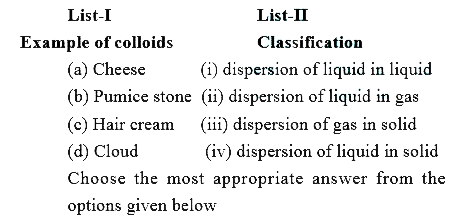Given below are two statements :
Statement I : The process of producing syn-gas is called gasification of coal.
Statement II : The composition of syn-gas is CO+CO2+H2,(1:1:1). In the light of the above statements, choose the most appropriate answer from the options given below:
Both statement I and Statement II are true.
Statement I is true but Statement II is false.
Statement I is false but Statement II is true.
Both Statement I and Statement II are false.
To solve the given question, we need to analyze both statements provided:
Step 1: Analyze Statement I
- Statement I: "The process of producing syn-gas is called gasification of coal."
- Explanation: Syngas (synthesis gas) is indeed produced through the gasification process, which involves converting coal (or other carbon-containing materials) into a gas mixture primarily composed of hydrogen (H₂) and carbon monoxide (CO) along with some carbon dioxide (CO₂). This statement is true.
Step 2: Analyze Statement II
- Statement II: "The composition of syn-gas is CO + CO₂ + H₂, (1:1:1)."
- Explanation: While syngas does contain CO, CO₂, and H₂, the ratio of these gases is not fixed at 1:1:1. Typically, the composition of syngas varies based on the gasification process and the feedstock used. A typical composition might be around 30-60% CO, 25-30% H₂, and 5-15% CO₂. Therefore, this statement is false.
Conclusion:
- Statement I is true.
- Statement II is false.
Thus, the correct answer is that Statement I is true and Statement II is false.
Final Answer:
The correct option is C: Statement I is true, Statement II is false.
---
- Statement I: "The process of producing syn-gas is called gasification of coal."
- Explanation: Syngas (synthesis gas) is indeed produced through the gasification process, which involves converting coal (or other carbon-containing materials) into a gas mixture primarily composed of hydrogen (H₂) and carbon monoxide (CO) along with some carbon dioxide (CO₂). This statement is true.
- Statement II: "The composition of syn-gas is CO + CO₂ + H₂, (1:1:1)."
- Explanation: While syngas does contain CO, CO₂, and H₂, the ratio of these gases is not fixed at 1:1:1. Typically, the composition of syngas varies based on the gasification process and the feedstock used. A typical composition might be around 30-60% CO, 25-30% H₂, and 5-15% CO₂. Therefore, this statement is false.
- Statement I is true.
- Statement II is false.
Thus, the correct answer is that Statement I is true and Statement II is false.
The correct option is C: Statement I is true, Statement II is false.
Topper's Solved these Questions
Similar Questions
Knowledge Check
Match List - I with List- II
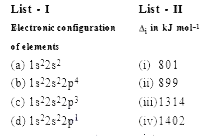
Choose the most appropriate answer from the options given below -A(a)→(ii),(b)→(iii),(c)→(iv),(d)→(i)B(a)→(i),(b)→(iv),(c)→(iii),(d)→(ii)C(a)→(i),(b)→(iii),(c)→(iv),(d)→(ii)D(a)→(iv),(b)→(i),(c)→(ii),(d)→(iii)
Match list - I with List - II :

Choose the most appropriate answer from the options given below :
View SolutionMatch List - I with List -II

Choose the most appropriate answer from the options given below :
View SolutionMatch List -I with List-II :
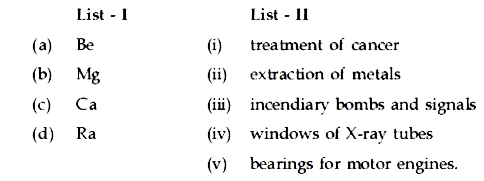
Choose the most appropriate answer from the option given below:
View SolutionMatch List-I with List-II :
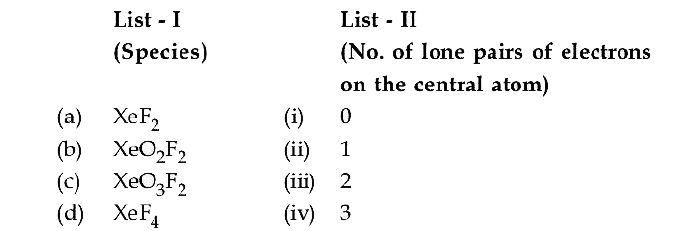
Choose the most appropriate answer from the options given below :
View SolutionMatch List-I with List-II :

Choose the most appropriate answer from the options given below :
View SolutionMatch List - I with List - II
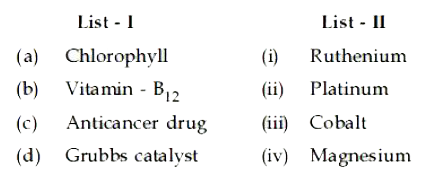
Choose the most appropriate answer from the options given below :
View SolutionMatch List - I with List - II.

Choose the most appropriate answer from the options given below :
View Solution


